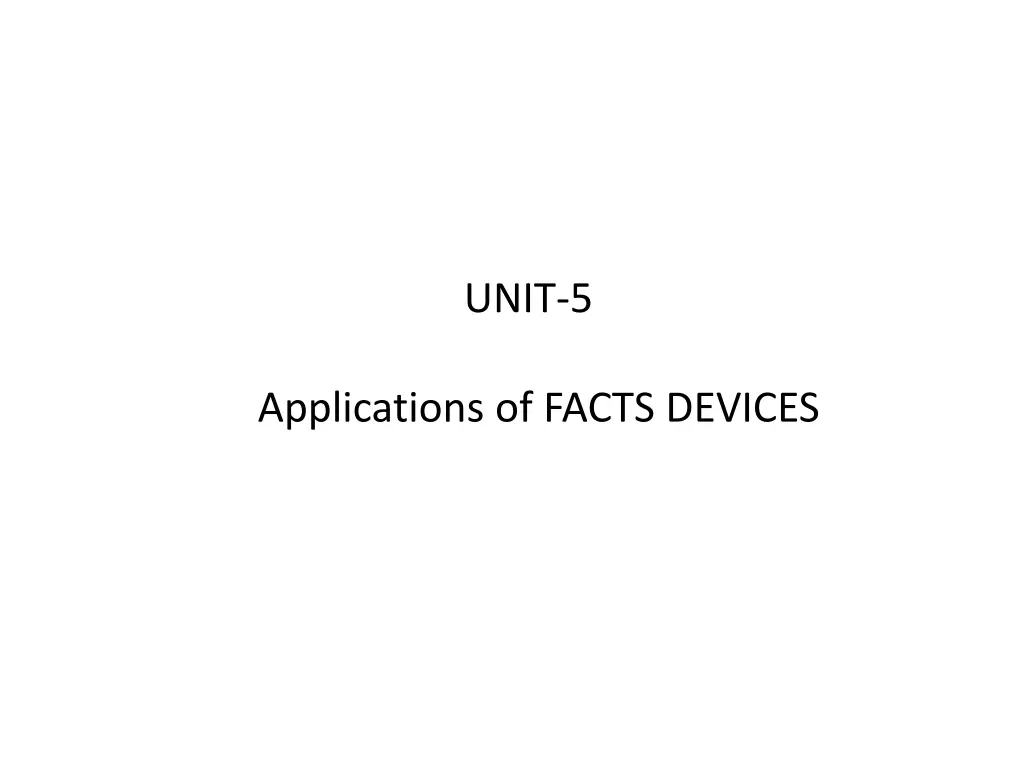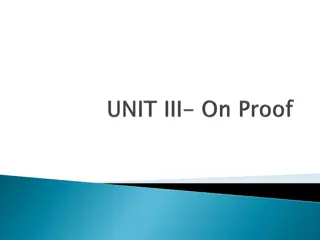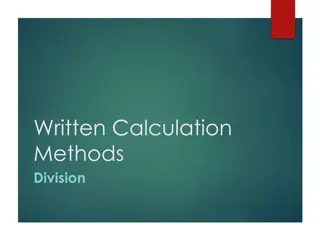
Enhancing Power System Stability with FACTS Controllers
Improve power system security and voltage stability by strategic use of FACTS Controllers. These devices optimize power transfer capabilities, reduce line currents, and minimize system losses. Various types of FACTS Controllers like STATCOM, SVC, and SSSC are explored for their effectiveness in enhancing voltage stability and power system controllability.
Download Presentation

Please find below an Image/Link to download the presentation.
The content on the website is provided AS IS for your information and personal use only. It may not be sold, licensed, or shared on other websites without obtaining consent from the author. If you encounter any issues during the download, it is possible that the publisher has removed the file from their server.
You are allowed to download the files provided on this website for personal or commercial use, subject to the condition that they are used lawfully. All files are the property of their respective owners.
The content on the website is provided AS IS for your information and personal use only. It may not be sold, licensed, or shared on other websites without obtaining consent from the author.
E N D
Presentation Transcript
UNIT-5 Applications of FACTS DEVICES
To improve system security and increase in margins of the voltage stability, a desirable and careful plan should be made. For maximization of power transfer capabilities, compensation of FACTS Controllers ( series and shunt types) is required. With respect to voltage stability, the voltage magnitudes in the buses are held close to their nominal values by compensation through FACTS Controllers and in addition, line currents and total systems losses are also reduced. In this context, sophisticated and versatile devices called FACTS Controllers are effectively used in adjusting the bus voltage magnitude thereby contributing for the improvement in voltage stability of the power system. FACTS Controllers deal with this crucial voltage stability problem by providing voltage support properly and coordinate the control actions. Owing to their flexibility and fast control characteristics, FACTS Controllers can perform the active and reactive power control.
The reactive power compensator can be placed to identify the utmost critical bus for voltage stability enhancement. Several new UPFC etc. are placed at those most critical nodes i.e. weakest techniques/methods have been used and several Voltage Stability Indices have been proposed. Many FACTS Controllers like STATCOM, SVC, SSSC, uses and various techniques/methods are tested to find their effectiveness in making the power system more and more voltage stable.
Power System Stability is another important problem of the power system which is effectively addressed by FACTS Controllers . Power Systems are subjected to stability threat because they are operated under overloaded conditions due to high power demand. The reduction in the power flow on the overloaded lines, improvement of voltage profile, loadability and reduction in the transmission power losses are some of the major benefits of using FACTS Controllers. FACTS Technology is a new emerging technology which is playing a crucial role in enhancing controllability and power transfer capability of the modern power systems which are operating close to their limits. Parameters like line impedance, current, voltage, phase angle can be effectively controlled by FACTS Controllers which in turn bring in necessary and desirable results in power system indicating its performance improvement.
By comparing the performance of different controllers with respect to system stability, it is found that for the improvement of power system stability, the UPFC is better when compared to the other FACTS Controllers such as SSSC, STATCOM, SVC, TCSC.
Applications of TCSC TCSC is to increase power transfer capacity in critical transmission lines (typically tie lines) under contingency conditions. Under normal steady state conditions, series compensation using fixed capacitors may be adequate unless SSR becomes a problem. A TCSC may be used in such cases to damp (mitigate) SSR by converting a part of the fixed compensation to controllable series compensation. Often, the contingency conditions are also accompanied by low frequency oscillations that can threaten dynamic security. Sometimes, transient stability may be affected. Thus, it becomes necessary to provide Power Oscillation Damping (POD) using appropriate control signals synthesized from local measurements. Typically active power or line current have been suggested as input to POD. In India, the first (commercial) TCSC was commissioned on 400 kV Raipur-Rourkela double circuit link in September 2004. A combination of 40% fixed series compensation and 5-15% variable compensation (TCSC) is used to provide dynamic power control during a HVDC pole outage of Talcher-Kolar HVDC link.
Applications of SVC The major application of SVC is for rapid voltage regulation and control of dynamic (temporary) over voltages caused by load throw offs, faults or other transient disturbances. The dynamic reactive control at the load bus increases power transfer and can solve the problem of voltage instability (collapse) caused by contingency conditions. It is to be noted that steady state voltage regulation can be achieved by mechanically switched capacitors and reactors (MSC and MSR). However, fast voltage regulation is required to prevent instability under transient conditions. Thus, generally, a SVC is operated with minimum reactive power output under normal conditions. This is achieved by the susceptance Regulator described earlier which ensures that full dynamic range is available for control under contingency conditions. The fast controllability provided by the thyristor switches can be also utilized to improve system stability (both transient and small signal). The use of auxiliary damping controllers can help damp low frequency, inter area power oscillations that can appear at stressed operating conditions (involving high loading of tie lines).
The location of SVC is an important issue. If the objective is to compensate a long transmission line, the SVC is to be located at the midpoint of the line (if a single SVC is to be used). For very long lines, multiple SVC at regular intervals can be applied. For example, if two SVCs are to be used, one is located at a distance d/3 from the sending end while the other is located at a distance, d/3 from the receiving end (d is the length of the line).
Applications of SSSC A SSSC is an advanced version of controlled series compensation, that is based on VSC and the use of GTOs instead of thyristors. There are many technical advantages of a SSSC over a TCSC. However, the application of a SSSC would depend on the techno-economic evaluation and proven reliability based on operating experience. A major drawback with SSSC is the need for a coupling transformer (and an intermediate transformer if multipulse converters are used). In contrast, TCSCs don't require any magnetic devices or coupling transformers. However, the harmonics are better controlled with a SSSC. A SSSC requires protection against over currents. A high speed electronic Thyristor Bypass Switch (TBS) is installed in parallel with the converter terminals . When an over current is detected, it operates quite fast. In case the system fault is not cleared by primary protection, then, the TBS is protected by a parallel connected low voltage breaker (LVB) which bypasses the TBS in about 6 cycles. If LVB fails to close when required, then its breaker failure protection closes the high side breaker (HSB) that by-passes the SSSC. After the fault is cleared, the SSSC is reinserted into the line by opening the LVB. The improvements in the power (semiconductor) device characteristics and the reduction in the costs would spur the applications of SSSC in place of TCSCs.
Applications of UPFC A UPFC may be required whenever the problems of voltage and power flow are present. A major advantage with multi-converter FACTS controller is the versatility and flexibility aforded by more than one degree of freedom. With a UPFC or IPFC, there are 3 degrees of freedom which can be utilized to regulate 3 quantities in the network - bus voltage and/or power and reactive power flows in the line(s). Such flexibility is of importance in the operation of restructured power systems.
1. VOLTAGE STABILITY: Series capacitive compensation can also be used to reduce the series reactive impedance to minimize the receiving-end voltage variation and the possibility of voltage collapse. Clearly, both shunt and series capacitive compensation can effectively increase the voltage stability limit. Shunt compensation does it by supplying the reactive load demand and regulating the terminal voltage. Series capacitive compensation does it.
IMPROVEMENT OF TRANSIENT STABILITY: The powerful capability of series line compensation is to control the transmitted power can be utilized much more effectively to increase the transient stability limit and to provide power oscillation damping. The equal area criterion, to investigate the capability of the ideal shunt compensator to improve the transient stability, is used again here to assess the relative increase of the transient stability margin attainable by series capacitive compensation.
POWER OSCILLATION DAMPING: Controlled series compensation can be applied effectively to damp power oscillations, for power oscillation damping it is necessary to vary the applied compensation so as to counteract the accelerating and decelerating swings of the disturbed machine(s). That is, when the rotationally oscillating generator accelerates and angle increases (d /dt > 0), the electric power transmitted must be increased to compensate for the excess mechanical input power. Conversely, when the generator decelerates and angle decreases (d /dt < 0), the electric power must be decreased to balance the insufficient mechanical input power.






















